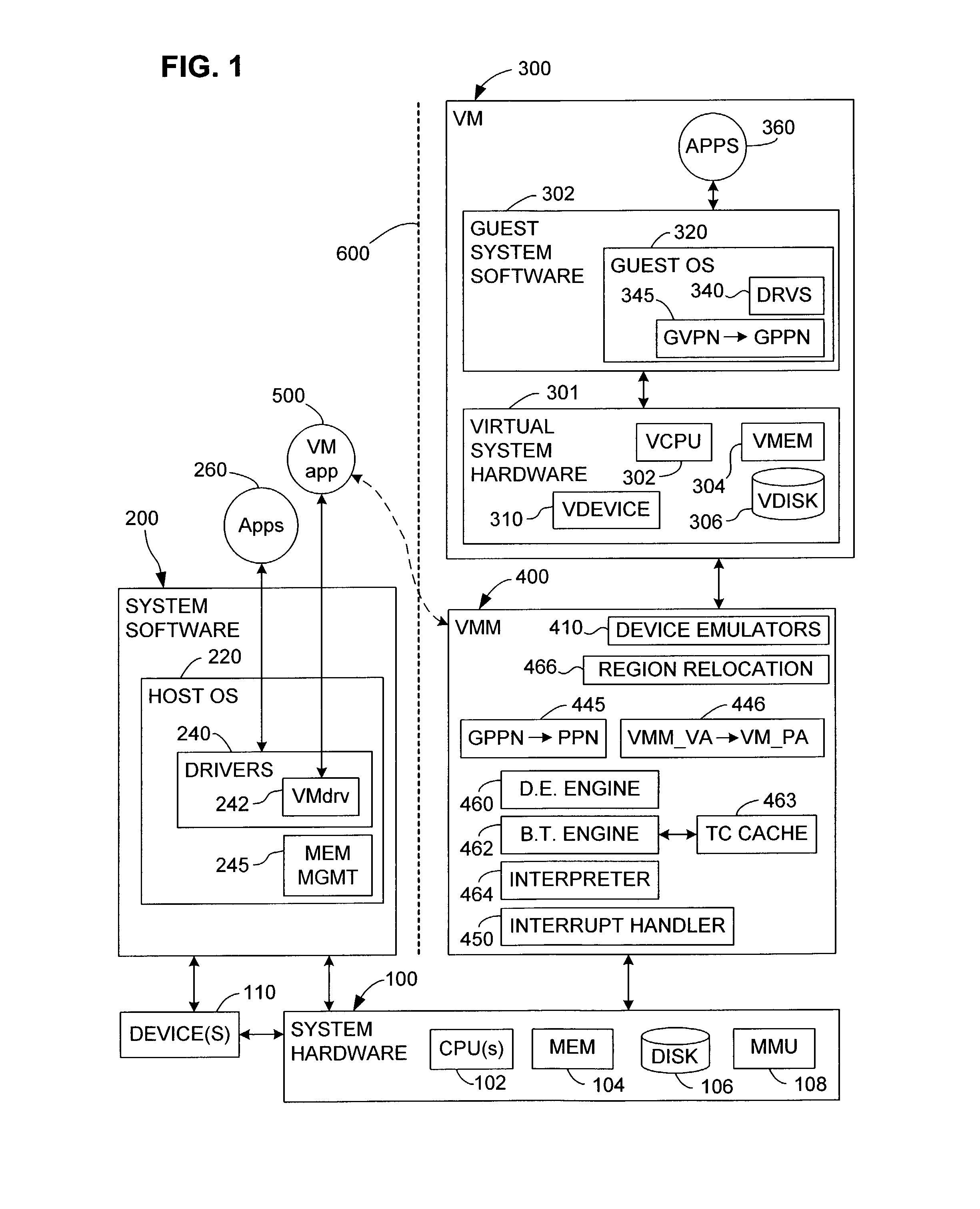Virtualization system for computers with a region-based memory architecture
a virtualization system and memory architecture technology, applied in computing, instruments, electric digital data processing, etc., can solve the problems of slow performance of users, application (or user of applications) will not know, and it is difficult to switch between the different contexts of the various virtual machines, etc., to achieve efficient sharing
- Summary
- Abstract
- Description
- Claims
- Application Information
AI Technical Summary
Benefits of technology
Problems solved by technology
Method used
Image
Examples
example 1
IP-Relative Branch (with a 32 MB Relative Address Offset)
[0129]Let L1 be the source address and L2 be the destination address.
[0130]The following instructions perform the branch:
[0131]L1: br L2[0132]. . .
[0133]L2:
where “ . . . ” indicates other, arbitrary non-branching instructions.
example 2
Indirect Branch (Over Whole Address Range)
[0134]L1: mov r1=ip;;[0135]adds r1=r1, L2−L1;;[0136]br r1[0137]. . .
[0138]L2:
[0139]Note that it may be preferable in some implementations to encode certain performance-critical VMM sections using absolute addressing. If such addressing is used, then the VMM preferably switches its region back to the “original” region (the one indicated by the VRN of the absolute addresses) before entering these code sections. The VMM may then switch once again to the “relocated” region when execution returns to the VM.
[0140]In the example given above, the VMM virtual address space is relocated from region 1 to region 2. This is of course just by way of illustration. In practice, the VMM can relocate itself to any region other than the one currently being addressed by the VM. To reduce the frequency of relocation, the VMM could maintain statistics on the region access history of the VM and then relocate itself to a region that the VM has not accessed as frequ...
PUM
 Login to View More
Login to View More Abstract
Description
Claims
Application Information
 Login to View More
Login to View More - R&D
- Intellectual Property
- Life Sciences
- Materials
- Tech Scout
- Unparalleled Data Quality
- Higher Quality Content
- 60% Fewer Hallucinations
Browse by: Latest US Patents, China's latest patents, Technical Efficacy Thesaurus, Application Domain, Technology Topic, Popular Technical Reports.
© 2025 PatSnap. All rights reserved.Legal|Privacy policy|Modern Slavery Act Transparency Statement|Sitemap|About US| Contact US: help@patsnap.com



